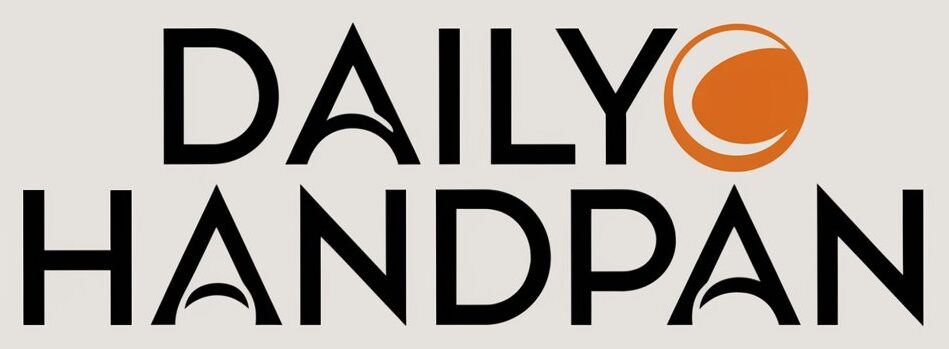Exploring unique chord progressions on the handpan can be a deeply rewarding experience for any musician. The handpan, with its ethereal and resonant sound, lends itself well to creating atmospheres and emotional landscapes that are both captivating and rich. In this article, we will delve into the intricacies of handpan chord progressions, offering a guide on how to innovate and elevate your musical repertoire. We will explore common chord progressions as a launching pad before venturing into more unique and complex sequences.
Understanding the Basics
Before diving into complex chord progressions, it is crucial to understand the basic structure and tuning of the handpan. A typical handpan consists of a central note, called the ding, surrounded by a series of other notes arranged in a circle. The notes are usually tuned to a specific scale, such as D minor, C major, or even more exotic scales like the Hijaz or Akebono.
Most handpans are designed to play in a specific key, which simplifies the process of creating harmonious chord progressions. Knowing your handpan’s tuning and the notes available will help you understand which chords you can form and how you can transition between them.
Common Chord Progressions
Common chord progressions serve as the foundation for more complex and unique sequences. By mastering these, you can create an array of moods and motifs. Here are some standard chord progressions that work well on the handpan:
- I-IV-V: This progression involves the first (I), fourth (IV), and fifth (V) chords of the scale. For example, in the key of C major, the chords would be C major, F major, and G major.
- ii-V-I: This jazz staple consists of the second (ii), fifth (V), and first (I) chords. In C major, this would be D minor, G major, and C major.
- I-vi-IV-V: A popular progression in pop music, this uses the first (I), sixth (vi), fourth (IV), and fifth (V) chords. For C major, it would be C major, A minor, F major, and G major.
Experimenting with Variations
Once you’re comfortable with basic progressions, it’s time to experiment. Try altering one or more chords in a standard progression to see how it changes the mood. For example, swapping out a major chord for its relative minor can add a surprising twist.
Creating Unique Chord Progressions
Unique chord progressions often arise from a willingness to step outside conventional patterns. Here are some techniques to help you create more distinctive sequences:
Modal Interchange
Modal interchange involves borrowing chords from parallel modes (scales that share the same tonic but have different notes). For instance, if you’re playing in C major, you can borrow chords from C minor or C Dorian. This can add unexpected colors to your music.
Example: In the key of C major, incorporating an A minor chord borrowed from C minor creates a modal interchange.
Polychords
Polychords involve layering two different chords on top of each other. While this technique is more common in jazz and modern classical music, it can add a complex and intriguing texture to your handpan music as well.
Example: Playing a G major chord over a C major chord to create a Cmaj7 sound.
Non-diatonic Chords
Non-diatonic chords are those that don’t naturally occur in the key you’re playing in. Introducing a non-diatonic chord can create tension and resolution, making your progression more compelling.
Example: In the key of C major, using an E major chord instead of the expected E minor chord.
Inversions and Voicings
Changing the order of the notes in a chord (inversion) or the specific place where you play the chord (voicing) can completely alter its sound. Handpan players can use different parts of the instrument to achieve interesting variations.
Example: Instead of playing F-G-A in the order of notes in an F major chord, try A-C-F, which is the second inversion of the F major chord.
Cluster Chords
Cluster chords are chords where the notes are very close together, often within a single scale degree. These chords can add dissonance and color to your progressions.
Example: Playing a C-D-E cluster for a rich, textured sound.
Rhythmic Changes
Another way to infuse uniqueness into your chord progressions is through rhythmic variation. Changing the timing and accents of when chords are played can dramatically alter the feel of your music.
Example: Playing in a 5/4 or 7/8 time signature instead of the usual 4/4 or 3/4.
Putting It All Together
Now that we’ve explored various techniques, let’s combine them to create a unique chord progression. For instance, starting in C major, you could borrow an A minor chord from C minor (modal interchange), add an E major chord (non-diatonic), and use a cluster chord like C-D-E for texture.
Here’s one possible sequence: C major – A minor – F major (second inversion) – E major – G major (polychord with B on top) – Cluster (C-D-E) – Resolution to C major.
This sequence takes advantage of modal interchange, non-diatonic chords, inversions, polychords, and cluster chords, creating a progression that’s both unique and musically satisfying.
Conclusion
Exploring unique chord progressions on the handpan opens up a world of musical possibilities. By understanding the fundamental principles of chord formation and progression, and by incorporating techniques like modal interchange, polychords, non-diatonic chords, inversions, and cluster chords, you can create rich, engaging, and emotionally resonant music. The beauty of the handpan lies in its capacity for both simplicity and complexity, making it an ideal instrument for both beginners and seasoned musicians. Challenge yourself to step outside traditional patterns and venture into new harmonic territories. Your creativity is the only limit.
FAQs
1. What is the best way to start learning chord progressions on the handpan?
Start with common chord progressions like I-IV-V and ii-V-I in the key your handpan is tuned to. Practice transitioning smoothly between chords to build a solid foundation.
2. Can I apply piano or guitar chord progressions to the handpan?
Yes, you can. While the handpan has its unique layout, many chord progressions from other instruments can be adapted to it, provided you adjust for the specific notes available on your handpan.
3. How do I know which chords I can play on my handpan?
Identify the key and scale of your handpan. This will determine the diatonic chords you can play. From there, you can experiment with non-diatonic chords and other techniques.
4. What is modal interchange and how can I use it effectively on the handpan?
Modal interchange involves borrowing chords from parallel modes. Effectively using it means knowing the chords available in related modes (e.g., C major and C minor) and incorporating them into your progressions to add variety and color.
5. Are there any resources or exercises to help with learning unique chord progressions on the handpan?
Yes, many resources are available, including online tutorials, sheet music, and dedicated handpan forums. Regular practice, recording yourself, and listening back can also be highly beneficial. Engaging with the handpan community can provide inspiration and new ideas.





